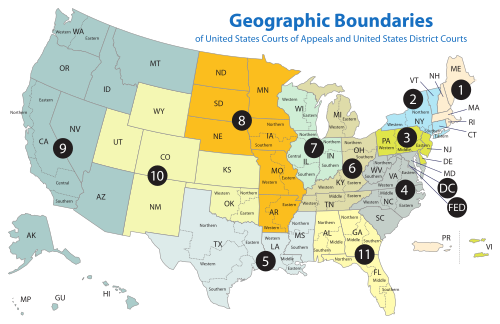| United States District Court for the District of Utah | |
|---|---|
| (D. Utah) | |
 | |
 | |
| Location | Orrin G. Hatch United States Courthouse More locations |
| Appeals to | Tenth Circuit |
| Established | July 16, 1894 |
| Judges | 5 |
| Chief Judge | Jill Parrish |
| Officers of the court | |
| U.S. Attorney | Melissa Holyoak (acting) |
| www | |
The United States District Court for the District of Utah (in case citations, D. Utah) is the federal district court whose jurisdiction is the state of Utah. The court is based in Salt Lake City with another courtroom leased in the state courthouse in St. George.
Contents
Appeals from the District of Utah are taken to the United States Court of Appeals for the Tenth Circuit (except for patent claims and claims against the U.S. government under the Tucker Act, which are appealed to the Federal Circuit).
The United States Attorney's Office for the District of Utah represents the United States in civil and criminal litigation in the court. As of April 22,2025 [update] the acting United States attorney is Felice John Viti. [1]

